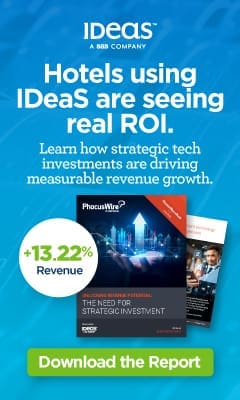 Generative artificial intelligence (AI), such as ChatGPT (OpenAI & Microsoft) or Google Bard, is all the rage these days. It is technology that can create original content by mimicking human creativity. With the rise of generative AI, we are witnessing a shift in the way businesses approach marketing.
Generative artificial intelligence (AI), such as ChatGPT (OpenAI & Microsoft) or Google Bard, is all the rage these days. It is technology that can create original content by mimicking human creativity. With the rise of generative AI, we are witnessing a shift in the way businesses approach marketing.
So much so that even leaders of the business world are showing genuine concern towards the fast-paced, unregulated evolution of this technology! See this open letter calling to pause giant AI experiments, signed by Elon Musk, Steve Wozniak and Yoshua Bengio, among others!
In travel and hospitality, generative AI is poised to have a profound impact on how brands market themselves, both from a B2C and B2B perspective. For this blog post, I asked ChatGPT to tell us how generative AI will impact travel marketing and provide examples of its potential applications in each of these categories: hotels, destinations, restaurants, cruise companies and airlines.
Its answer was fascinating!
1. Hotels

Source: Dall-E 2.
One of the biggest challenges for hotels is creating compelling visual content that showcases their property in the best possible light. With generative AI, hotels can create photorealistic images of their rooms and amenities without the need for costly professional photography. By inputting a few parameters such as room size, layout, and style, generative AI can create a variety of images that capture the essence of the hotel’s aesthetic.
For example, AI-powered startup Arrive uses generative AI to create 3D models of hotel rooms. By inputting the room dimensions and style preferences, Arrive can generate a photorealistic image of the room, complete with furniture and decor. This allows hotels to showcase their rooms in a way that is both cost-effective and visually appealing.
Marriott also banks on generative AI to create a personalized hotel experience for its guests. The hotel chain uses AI to analyze customers’ preferences, such as room temperature, pillow firmness, and room layout, and creates a customized room for each guest. The AI also monitors guests’ habits and adjusts the room accordingly, which has led to a 25% increase in customer satisfaction.
2. Destinations (DMO)
Destinations are constantly competing for tourist dollars, and one way to stand out is by creating unique travel experiences. With generative AI, destinations can create personalized travel itineraries for visitors based on their preferences and interests. By inputting data such as the visitor’s age, interests, and travel history, generative AI can create a customized itinerary that includes activities, restaurants, and sights tailored to their individual preferences.

For instance, Visit Finland has used generative AI to create a campaign called “Rent a Finn,” which offered tourists the chance to experience the Finnish way of life. The campaign used AI to create a series of short videos that showcased the experiences of Finnish locals, which were then used to create a unique itinerary for each traveler. The campaign was a huge success, and Visit Finland saw a 34% increase in tourist bookings.
Another example is the travel company Wayblazer which uses generative AI to create personalized travel recommendations for its customers. By analyzing a customer’s past travel behavior and preferences, Wayblazer can suggest destinations and activities that are likely to appeal to them. This type of personalized recommendation system can help destinations stand out in a crowded market and increase tourist engagement.
3. Restaurants
Restaurants are always looking for new and innovative ways to showcase their menu offerings. With generative AI, they can now create customized menus based on customer preferences and dietary restrictions. By inputting data such as the customer’s favorite ingredients, allergies, and dietary preferences, generative AI can create a menu that caters to their individual needs.
For example, AI-powered startup Tastewise uses generative AI to create personalized menus for restaurants. By analyzing customer data and food trends, Tastewise can suggest menu items that are likely to appeal to customers. This type of personalized menu can help restaurants stand out in a competitive market and increase customer satisfaction.
Another examples is Haidilao, a popular Chinese hotpot chain. They used generative AI to create a personalized dining experience for its customers. The restaurant uses AI to analyze customers’ dining preferences, such as spice levels, protein preferences, and dietary restrictions, and creates a customized menu for each customer. The AI also monitors customers’ dining habits and adjusts the menu accordingly, which has led to a 30% increase in customer satisfaction.
4. Cruise companies
With generative AI, cruise companies can create immersive virtual experiences that showcase their destinations and amenities. By inputting data such as the customer’s travel history and interests, generative AI can create a virtual experience that allows customers to explore the ship and destinations before they book their trip.
For example, the cruise company Royal Caribbean uses generative AI to create virtual experiences for its customers. By using a combination of 360-degree video, VR, and generative AI, Royal Caribbean allows customers to explore their ships and destinations before they book their trip. The AI also monitors customers’ onboard habits and adjusts the itinerary accordingly, which has led to a 20% increase in customer satisfaction.

5. Airlines
The airline industry is one of the most competitive industries in the world, with hundreds of airlines vying for customers’ attention. One of the biggest challenges airlines face is standing out from the crowd and offering unique travel experiences to their customers. Generative AI can help airlines create personalized content that resonates with their customers, which is crucial for building brand loyalty.
For instance, Air France has used generative AI to create a personalized advertising campaign that targets individual customers based on their preferences. The airline created over 2,000 unique ads, each tailored to a specific customer, based on their travel history, social media behavior, and other data points. This approach led to a 50% increase in click-through rates compared to their standard advertising campaigns.
Conclusion
When it comes to generative AI, the worse part – or best part, depending on your beliefs – is that we are only beginning to scratch the surface. The most talked-about tool, ChatGPT, was launched less than six months ago (November 30th, 2022) and recently released its GPT4-Plus paid extension, which is better and faster. Google is coming around with Bard, which promises to also have quite the potential.
These two AI solutions are mostly about creating text, but there are many, many other tools out there that can help with images, videos, sound, crafting ads, podcasts, creating websites and/or itinerairies, and so on. In other words, this is major revolution taking place and it’s not just about to shake the education system – as universities and colleges have been discovering in the past couple of weeks! This will have far-reaching consequences in most industries, including travel and hospitality.
As I mentioned in a recent interview, it’s not so much that ChatGPT represents a danger to travel advisors or marketers in travel and hospitality, per se. The real danger will rather come from travel advisors and travel marketers that have embraced generative AI… making them more productive, more effective and more creative!




















